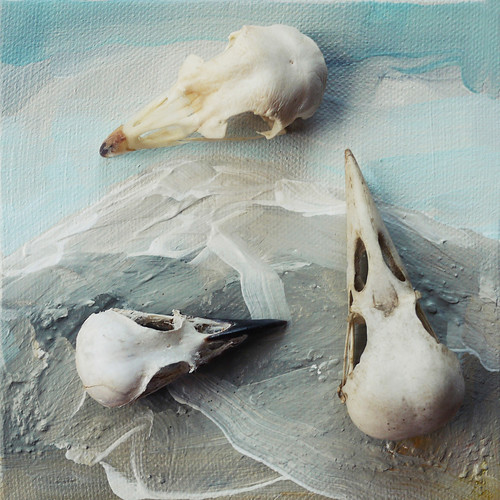

wild goose chase
three craws
Three craws sat upon a wa’,
Sat upon a wa’, sat upon a wa’,
Three craws sat upon a wa’,
On a cauld and frosty mornin’.
It’s an old song. Like so many traditional Scots songs, it makes very little sense. There are these three crows, you see, and they’re sitting on a dividing structure at some hour before noon when the temperature is less than optimal. Brumous weather, you might say. The song describes the behavior of each of these three crows as they sit on the wall in question.
The first craw was greetin’ for his maw. He’s not offering a welcome to his maternal parent; no, the poor thing is crying out for her (‘greet’ from the Anglo-Saxon greotan, a Scots term meaning ‘to weep’). Not an entirely unreasonable behavior, though rather atypical of adult Corvidae. The second craw fell and broke his jaw. It’s hard to imagine a crow—even a Scottish crow—falling off a stable platform like a wall (which we can presume is made of stone, since this is Scotland, where everything is made of stone, including their biscuits). But it’s a song, so a degree of poetic license must be tolerated. The third craw, couldnae caw at a’. There are relatively few medical explanations for a crow being rendered mute, but the song is sadly lacking in presenting the range of the creature’s symptomology so no accurate diagnosis can be made.
An that’s a’, absolutely a’,
Absolutely a’, absolutely a’,
An that’s a’, absolutely a’,
On a cauld and frosty mornin’
And that’s it. That’s the entirety of the song. The first verse introduces the three crows and reports on the atmospheric conditions (the relative temperature is confirmed in each subsequent verse). In the second verse, one crow cries out for its mother; in the third verse, another drops inexplicably from its perch and shatters its mandible; in the fourth verse the third crow just stands silently; and the final verse admits that absolutely nothing else of note took place. It was, it seems, a very slow news day even by Scottish standards when this song was written.
Blog photograph copyrighted to the photographer and used with permission by utata.org. All photographs used on utata.org are stored on flickr.com and are obtained via the flickr API. Text is copyrighted to the author, greg fallis and is used with permission by utata.org. Please see Show and Share Your Work
